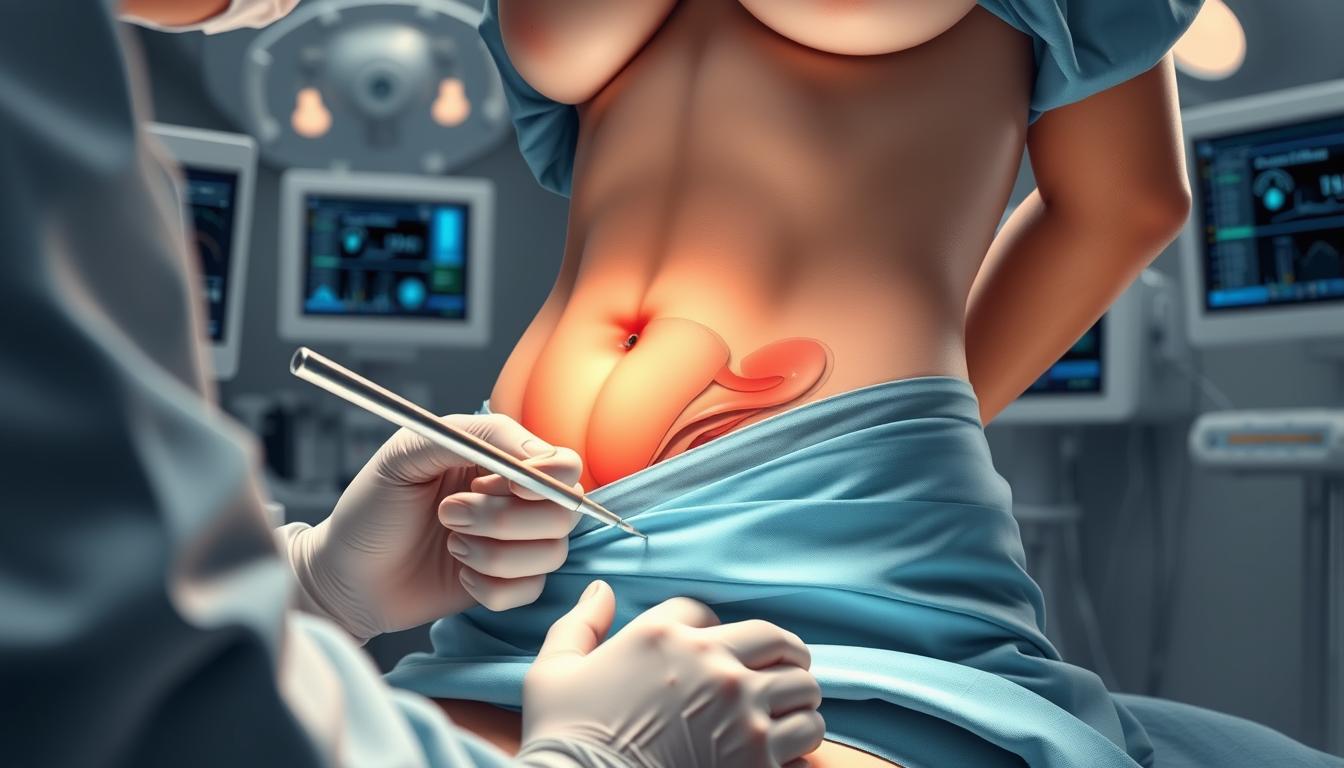Achieving the desired body shape often involves more than just diet and exercise. For many, stubborn fat deposits can be resistant to traditional weight loss methods, leading individuals to seek out plastic surgery options like liposuction.
Liposuction is a specialized procedure designed to remove excess fat and reshape the body’s contours. Unlike non-surgical fat reduction methods, liposuction offers a more permanent solution by removing fat cells. This procedure can also potentially improve the appearance of the skin in treated areas.
As a popular plastic surgery option, liposuction has evolved significantly, offering various techniques to suit different needs. Understanding the procedure, its benefits, and what to expect during recovery is crucial for those considering this body sculpting solution.
Key Takeaways
- Liposuction is a surgical procedure that removes stubborn fat deposits.
- It differs from non-surgical fat reduction methods by providing a more permanent solution.
- The procedure can improve the appearance of the skin in treated areas.
- Modern liposuction techniques have evolved, offering various options for body sculpting.
- Understanding the benefits and recovery process is essential for those considering liposuction.
Understanding Liposuction for Body Contouring
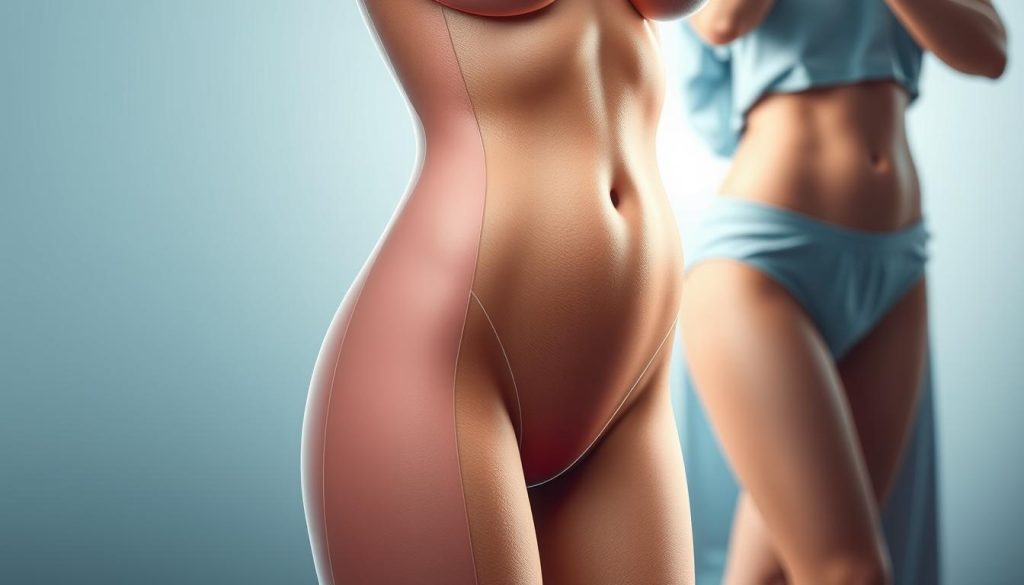
Body contouring through liposuction offers a solution for individuals struggling with stubborn fat areas despite maintaining a healthy lifestyle. Liposuction is a surgical procedure designed to remove excess fat from specific areas of the body, thereby improving its shape.
What Is Body Contouring?
Body contouring encompasses a range of procedures aimed at reshaping and enhancing the body’s appearance. It involves removing excess fat and sometimes tightening the skin to achieve a smoother, more toned look.
How Liposuction Differs from Other Body Sculpting Methods
Liposuction is distinct from non-surgical body sculpting methods in that it involves making small incisions to directly remove fat deposits. Unlike other methods that may use freezing, heating, or radiofrequency to reduce fat cells, liposuction provides a more immediate and sometimes more effective solution for people with localized fat accumulation.
Ideal Candidates for Liposuction
Individuals who are considered ideal candidates for liposuction are those with good skin elasticity, within 30% of their ideal body weight, and having realistic expectations about the procedure’s outcomes. A plastic surgeon evaluates factors such as skin tone, fat distribution, and overall health to determine if liposuction is appropriate for reshaping specific areas.
The Liposuction Procedure Explained

The liposuction procedure involves several key steps that plastic surgeons follow to achieve the desired outcome. This surgical cosmetic procedure removes fat from specific areas of the body, creating a more contoured appearance.
Pre-Procedure Preparation
Before undergoing liposuction, patients typically complete a thorough consultation process with their plastic surgeon. This includes medical evaluations, laboratory tests, and detailed discussions about expected outcomes. Pre-procedure preparation often involves avoiding certain medications that increase bleeding risk, stopping smoking, and following specific dietary guidelines in the weeks leading up to surgery.
Types of Anesthesia Used
Depending on the extent of the procedure and the patient’s medical history, the plastic surgeon may recommend local anesthesia with sedation, regional anesthesia, or general anesthesia. Patients may be given general anesthesia or “twilight” sedation to ensure comfort during the procedure.
Step-by-Step Surgical Process
The standard liposuction process involves making small, strategic incisions, injecting tumescent solution (containing saline, lidocaine, and epinephrine), and using a cannula connected to a vacuum device to suction out fat cells. The entire surgical process typically takes between two to three hours for a single area, with more extensive procedures requiring additional time in the operating room.
Advanced Liposculpture Techniques
Advanced liposculpture techniques have evolved beyond simple fat removal to include high-definition liposuction, which sculpts around muscle groups to enhance definition and create more athletic-looking results. Modern techniques such as ultrasound-assisted (VASER), laser-assisted, and power-assisted liposuction offer enhanced precision and potentially reduced recovery time compared to traditional methods.
Common Body Areas Treated with Liposuction
Liposuction is a versatile cosmetic procedure that can be applied to various parts of the body to achieve desired body contouring. Different body parts can be treated with liposuction for effective shaping and fat reduction.
Abdomen and Flanks
The abdomen and flanks are among the most commonly treated areas with liposuction. These regions often accumulate stubborn fat that resists diet and exercise. Liposuction helps in removing this excess fat, resulting in a more toned appearance.
Thighs and Buttocks
Thigh liposuction addresses different areas, including the inner thighs, outer thighs (saddlebags), and anterior thighs. Buttocks contouring focuses on improving shape and proportion rather than volume reduction. This combination can lead to a more balanced lower body appearance.
Arms and Back
Arm liposuction typically targets the upper arms where excess fat creates the appearance of “bat wings.” Back liposuction addresses rolls of fat along the mid and lower back, including the “bra roll” area in women. Treating these areas can significantly enhance the overall body silhouette.
Neck and Face
Facial and neck liposuction requires exceptional precision due to the delicate nature of these areas. It focuses on the jawline, under the chin, and neck to create more defined contours, contributing to a more youthful appearance.
| Body Area | Common Issues | Liposuction Benefits |
|---|---|---|
| Abdomen & Flanks | Stubborn fat, love handles | Toned appearance, fat reduction |
| Thighs & Buttocks | Saddlebags, disproportionate shape | Improved shape, balanced appearance |
| Arms & Back | Bat wings, bra roll | Enhanced silhouette, reduced fat |
| Neck & Face | Double chin, undefined jawline | Defined contours, youthful look |
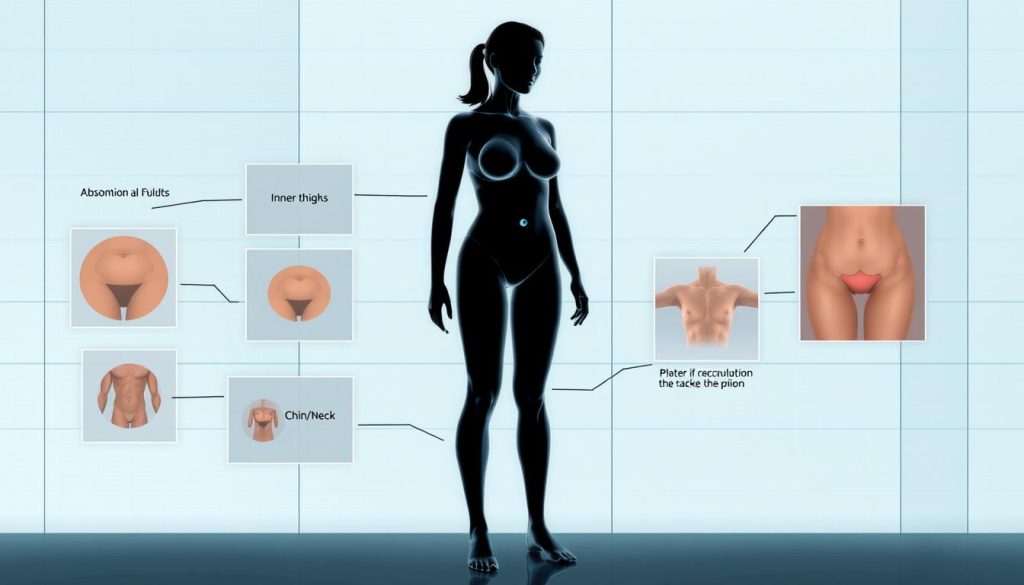
Each body area presents unique challenges and considerations for the surgeon, including fat consistency, skin elasticity, and anatomical structures. The artistic skill of the surgeon is crucial in treating multiple body areas to ensure proportional, natural-looking results.
Benefits and Risks of Liposuction
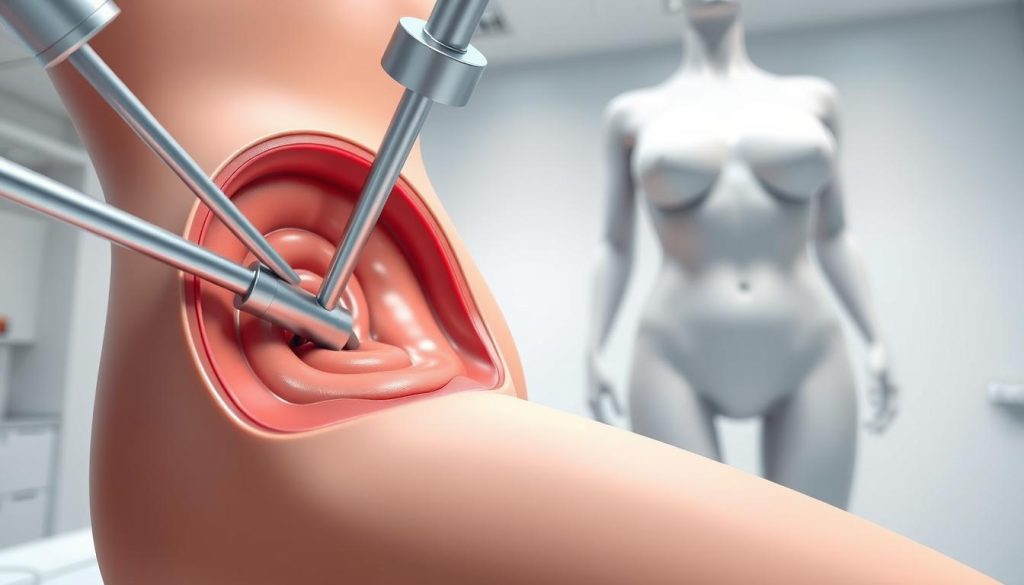
Liposuction is a popular body contouring procedure that offers numerous benefits, but it’s essential to be aware of the potential risks involved. As with any plastic surgery, there are both advantages and disadvantages to consider.
Expected Benefits and Outcomes
The primary benefit of liposuction is the permanent removal of excess fat cells from targeted areas, resulting in improved body contours and proportions that can enhance self-confidence and body image. Patients can expect more defined body contours, improved fit of clothing, and potentially better skin appearance in treated areas, though results vary based on individual factors including skin elasticity.
Potential Complications
Common side effects include temporary pain, swelling, bruising, and numbness, which typically subside within several weeks following the procedure. More serious potential complications include infection, irregular contours, fluid accumulation, poor wound healing, skin or nerve damage, and risks associated with anesthesia.
Limitations of the Procedure
Liposuction has important limitations—it cannot address obesity, is not effective for cellulite reduction, and will not tighten significantly loose skin following major weight loss. The procedure is not a substitute for healthy lifestyle choices, and patients who gain significant weight after surgery may see diminished results as remaining fat cells expand.
Recovery and Long-Term Results
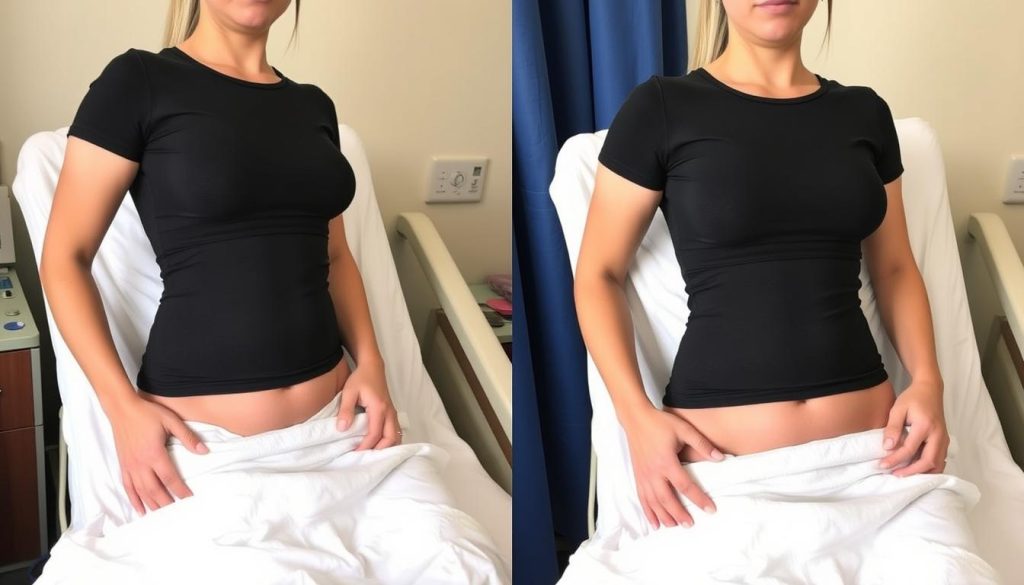
Effective recovery after liposuction involves a combination of rest, proper care, and follow-up appointments with the surgeon. The plastic surgeon will prescribe pain medication for a few days after the procedure. Swelling should begin to disappear in a matter of weeks and resolve completely in a few months.
The immediate recovery period typically requires 1-2 weeks of limited activity, with most patients able to return to desk work within 3-7 days, depending on the extent of the procedure. Compression garments are an essential part of recovery, typically worn for 4-6 weeks to reduce swelling and support healing tissues.
While initial results become visible as swelling subsides over the first few weeks, final results may take 3-6 months to fully develop. Patients are advised to avoid strenuous exercise for 4-6 weeks, gradually reintroducing physical activity under their surgeon’s guidance.
Long-term maintenance of results depends significantly on stable weight management. The skin‘s response to fat removal varies based on age, genetics, and elasticity. Follow-up appointments are crucial for monitoring recovery progress, with most surgeons scheduling checks at one week, one month, three months, and six months post-procedure.
Maintaining results long-term requires commitment to a healthy diet, regular exercise, and weight stability to prevent enlargement of remaining fat cells. By understanding the importance of recovery and long-term care, patients can achieve optimal results from their liposuction procedure.
FAQ
What is the typical recovery time after undergoing a liposuction procedure?
The recovery time varies depending on the individual and the extent of the procedure, but most people can return to their normal activities within a few weeks. Swelling and bruising are common, and it may take several months for the final results to be visible.
Will I experience significant pain after the surgery?
While some discomfort is expected, pain is typically managed with medications prescribed by the plastic surgeon. The level of discomfort varies from person to person, but most patients report that it is manageable.
How long does the liposuction procedure take to complete?
The duration of the procedure depends on the areas being treated and the complexity of the case, but it can take several hours to complete. The surgeon will provide a more accurate estimate during the consultation.
Are the results of liposuction permanent?
While liposuction can provide long-lasting results, it is not a substitute for a healthy diet and regular exercise. Maintaining a stable weight is crucial to preserving the outcome of the procedure.
Can liposuction be performed on multiple areas of the body at once?
Yes, it is possible to treat multiple areas during a single procedure. Commonly treated areas include the abdomen, thighs, arms, and neck. The surgeon will discuss the best approach based on individual needs and goals.
What are the potential risks and complications associated with liposuction?
As with any surgical procedure, there are risks involved, including infection, scarring, and reaction to anesthesia. A qualified plastic surgeon will discuss these risks in detail and outline steps to minimize them.
How soon can I resume normal activities and exercise after liposuction?
The recovery process varies, but most patients can gradually resume normal activities and exercise within a few weeks. The surgeon will provide personalized guidance on post-operative care and activities.
